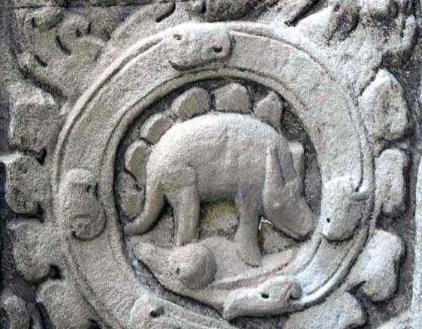A year has 525,600 minutes. Each of them can hold remarkable moments that we will remember for years to come. In 2007, we saw leaders work to improve the world. Some searched for ways to bring peace to the Middle East. Others raised awareness about climate change and reminded us of the fragility of our planet.
We thrilled to the discovery of a distant planet that might support life. We felt sorrow for the victims of a collapsed bridge. And we honored the brave men and women who serve in the armed forces.
In sports, a controversial slugger slammed past a home-run record, and a quarterback led his team to an exciting Super Bowl victory. In the world of entertainment, we said hello to a new American Idol and goodbye to one of literature's most belovedoand memorableowizards.
Here are some moments to remember from the minutes of 2007.
JANUARY 2
The nation mourned the death of former President Gerald R. Ford. The unelected 38th President helped to heal the country at a time when many Americans had lost faith in government. Ford was 93.
FEBRUARY 4
The Indianapolis Colts beat the Chicago Bears 29-17 in Super Bowl XLI. Quarterback Peyton Manning (holding trophy) celebrates with Colts coach Tony Dungy.
MARCH 29
President George W. Bush and House Speaker Nancy Pelosi awarded the Congressional Medal of Honor to World War II African-American heroes the Tuskegee Airmen.
APRIL 24
Astronomers discovered a planet outside our solar system that seems as if it could sustain life. The planet, named Gliese 581c, is located 120 trillion miles from Earth.
MAY 22
Arizona high school student Jordin Sparks was crowned the new American Idol. The singer's big voice and sparkling personality wowed American Idol judges and TV audiences. At age 17, she was the competition's youngest winner.
JUNE 27
Britain's prime minister and Labor Party leader Tony Blair resigned after leading his country for 10 years. Blair was the youngest prime minister to serve Britain since 1812, taking office at age 44. He was a close ally of United States Presidents throughout his time in office.
JUNE 29
Apple released the iPhone to huge fanfare. The high-tech gadget combines a phone, an iPod, an Internet browser and a digital camera in one handheld device.
JULY 7
The new Seven Wonders of the World were announced. Almost 200 landmarks were nominated, but only the places voters found most dazzling made the list. About 100 million votes were cast on the Internet and by text messages. China's Great Wall was a top choice.
JULY 7
Live Earth, a 24-hour concert on seven continents, brought together 150 music acts and millions of people. The goal: to raise awareness about global warming. Here, crowds watch Macy Gray perform in Brazil.
JULY 21
The seventh and final book in the Harry Potter series, Harry Potter and the Deathly Hallows, was released. In the first 24 hours, 11 million copies were sold.
AUGUST 1
It was rush hour in Minneapolis, Minnesota, when the I-35W bridge over the Mississippi River suddenly collapsed. Cars plunged into the river and 13 people died. The terrible accident brought attention to the safety of bridges all around the country.
AUGUST 7
As rumors of steroid use swirled around him, San Francisco Giants outfielder Barry Bonds hit homer No. 756, smashing the all-time home-run record.
SEPTEMBER 10
The top American military commander in Iraq, General David Petraeus, reported to Congress that progress was being made in bringing stability to that country.
SEPTEMBER 12
The World Conservation Union published its annual Red List of plants and animals in danger of extinction. In 2007, there were 16,306 different species on the list, including critically endangered great apes like this orangutan.
OCTOBER 12
The prestigious Nobel Peace Prize was awarded to former Vice President Al Gore and a United Nations panel on climate change.
OCTOBER 28
There was joy in Massachusetts after the Red Sox swept the Colorado Rockies to win the World Series. Boston last won the title in 2004. Mike Lowell was named Most Valuable Player.
NOVEMBER 27
President George W. Bush hosted a conference in Annapolis, Maryland, that brought together Israeli prime minister Ehud Olmert and Palestinian president Mahmoud Abbas. They agreed to hold peace talks.
DECEMBER 4
A kayaker paddled through a submerged neighborhood in Centralia, Washington, after rain pounded the Pacific Northwest. The storm brought down trees and power lines with 90-mile-per-hour wind gusts. There was widespread flooding of rivers and streams. A state of emergency was declared in Washington and Oregon.





